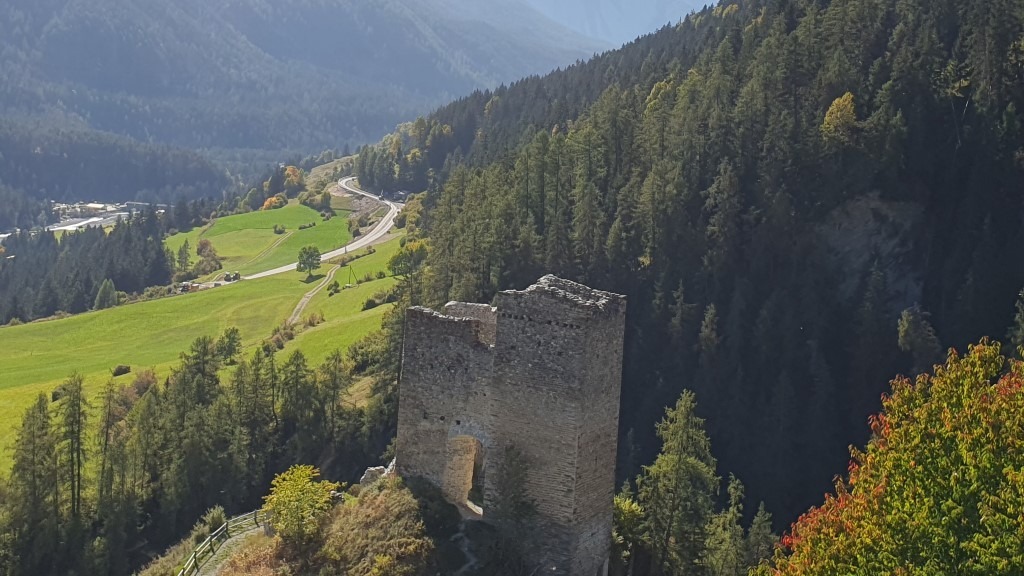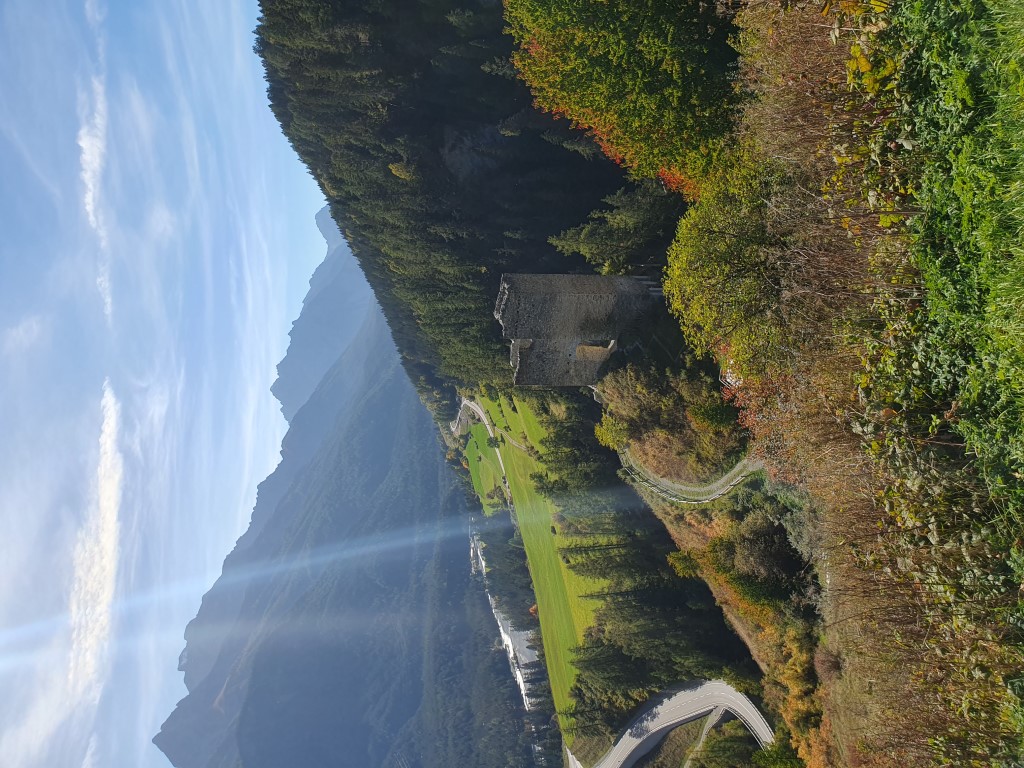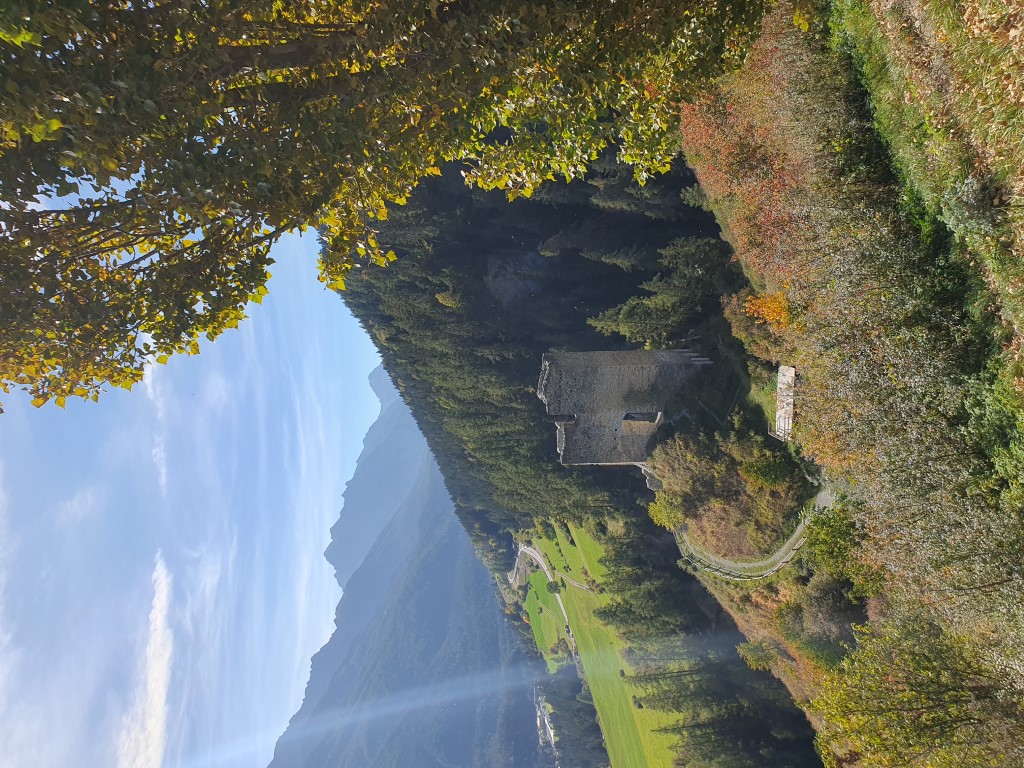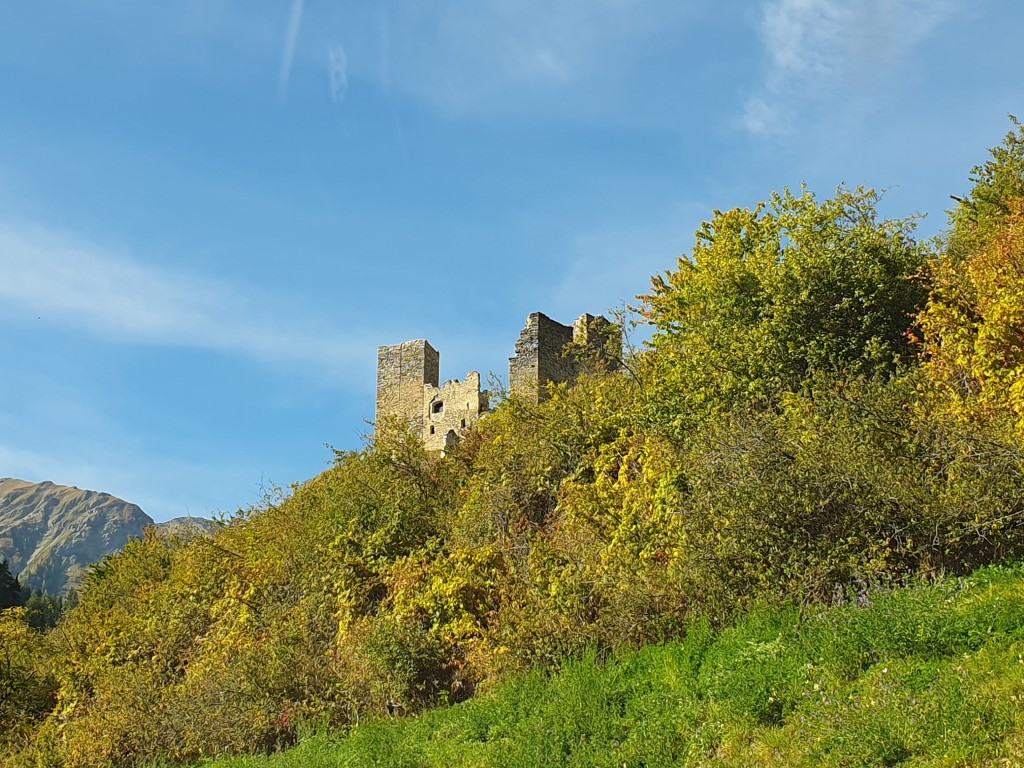In the wide valleys of the enchanting Lower Engadine, where the majestic Alpine peaks seem to touch the sky, the ruins of Tschanüff Castle stand proudly. Like an enchanted guardian, it stands enthroned on a picturesque spur that boldly extends along the edge of the Val Sinestra ravine. Here, in the midst of an idyllic landscape, a place of historical significance and timeless beauty is revealed.
Tschanüff Castle, once a magnificent spur castle, rises majestically at a height of 1240 metres above sea level. Its ancient walls tell stories of times gone by and preserve the evidence of long-forgotten eras. With every stone that still stands proudly upright, the history of the region seems to come alive.
The name of this fascinating ruin has poetic origins. The sonorous name Tschanüff, which comes from the Romansh Chà nouva (lat. Casa Nova), means "new house". A name that carries with it the feeling of renewal and new beginnings. Over the centuries, Tschanüff Castle has changed its identity and adapted to the changing times.
As one of the most important castle complexes alongside the imposing Tarasp Castle, Tschanüff Castle exudes an irresistible attraction. It invites us to explore the past and feel the breath of history that lingers in every corner. The remains of the walls and towers, which stand out against the sky and inspire our imagination, bear witness to its former splendor and grandeur.
Tschanüff Castle, once known as Ramosch or Remüs, is a place of memory and wonder. Here, past and present merge in a magical way and awaken a longing for times long gone. May visitors to Tschanüff Castle immerse themselves in its history and admire its beauty while being caressed by the gentle winds of the Lower Engadine.
Story
The Lords of Ramosch have been known since the 12th century as servants of the Bishop of Chur and the Lords of Tarasp. In 1256, Count Meinrad I of Gorizia and Tyrol allowed the knight Nannes of Ramosch to build a castle. However, the oldest parts of Tschanüff Castle date back to the 12th century, which suggests an extension of the existing complex.
In the 14th century, a dispute arose between the brothers Schwiker and Konrad von Ramosch, which was settled by Duke Leopold of Austria in 1365. However, Schwiker killed his brother in 1367, whereupon Leopold declared Schwiker's property forfeited and enfeoffed Ulrich von Matsch with the castle and lordship. Later, von Matsch was also able to acquire the rights of the murdered Konrad.
In 1394, Bishop Hartmann of Chur conquered the castle and forced the von Matsch family to cede their rights to the Ramosch fortress in return for compensation. Although Austria renewed Ulrich von Matsch's enfeoffment of Ramosch in 1403, the castle remained under the control of the bishop. In 1415, a compromise was sought, but it was not confirmed until 1421 by an arbitration court in Bolzano.
In the course of history, the castle was destroyed and rebuilt several times. In 1468, churchgoers occupied the castle, but did not cause any major damage. In 1475, it was set on fire by the Austrians, and during the Swabian War in 1499, it was set on fire again by the bishop's troops. During the turmoil in Graubünden, the castle was set on fire again in 1622, and in 1780, due to increasing decay and landslides in the western part, it was finally abandoned.
Legend of the last lords of Tschanüff
In days gone by, when love was trapped in golden chains and the secrets of the heart rang like a tender song in the wind, a sad story full of beguiling magic and fateful twists and turns took place.
A brave knight, who once found love in the arms of a wonderful woman, dared to exceed the limits of his fidelity. His longing drove him to the mysterious cave of Funtana Chistagna, where a fairy lived in her magical kingdom. But fate was to thwart his plans, because his spurned wife became aware of his infidelity and decided to get to the bottom of the truth.
With cunning and persistence, she followed the knight into the hidden cave and watched him and the fairy as they slept. In a moment of silence and darkness, when the night cast its mysterious veil over the sleeping figures, the woman dared to grab a lock of the fairy's hair. This precious evidence would reveal her husband's betrayal.
When the knight was finally confronted, he solemnly promised never to visit the fairy again. But fate, which spun its threads with malicious joy, wanted it differently. The curse that the disappointed fairy pronounced on the unfaithful knight came to life with all its dark power. The knight lost his life in the war and his sons were also taken from the world far too early.
The fairy, however, whose heart was filled with lost love and bitter pain, cried her tears at the times when the knight once stayed with her. In the early morning hours, when the first light appeared on the horizon, and in the evening hours, when the sun gently sank behind the mountains, her tears filled the air and told of her unfulfilled longing. Thus these precious tears became the source of a spring that poured its waters into the world with pulsating vitality and filled the valley with its mysterious whisper.
Access
Tschanüff Castle is freely accessible.







